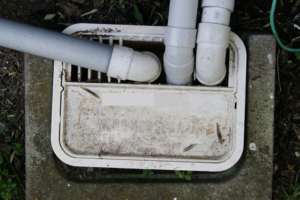Drainage systems are intricate frameworks that address the need to remove sewage from homes as well as prevent unsafe sewage from subsurface drainage from blocking and re-entering the house with hazardous gases and foul air. The gully trap is one of the main types of drainage systems found in homes. A gully trap is a drain pipe extension in the shape of a basin with a seal that captures harmful fumes and prevents the gases from escaping, allowing waste water to enter the sewage system safely.
Gully traps are best envisioned as the connection between the barrier that prevents escaping water from a house and the proper underground drainage. Every home should have one, so it’s crucial to understand the various gully trap types and what they’re intended to protect against.
Gully trap: Measurements
The gully trap’s total depth must not be just under 30 cm. Additionally, the water must have a minimum watertight seal of 50 mm and be at least 15 cm deep. One 15 cm x 15 cm cast iron grating that is correctly embedded in a cement concrete base and enclosed in a brick masonry chamber is required for each gully trap. A properly plastered, airtight chamber is required. It should cover the inside dimensions of a fixed frame that is 30 cm by 30 cm.
The Gully trap thus isolates the sullage drain from the home’s sewer line. It is not a necessity to provide a separate gully trap for baths, sinks and kitchens when a gully trap is available.
Gully trap: Importance
Gully traps are required to keep infestations which include rodents and other sewage animals, out of the pipe that leads into the house as well as to prevent the escape of hazardous gases that can constitute from waste and standing water. A discharge gully can be a useful tool for removing surface water and rain.
The framework that keeps the gases in the trap is referred to as a “water seal,” which is another name for the body of water at the bottom of the gully that keeps the gases from escaping through the top seal or hoppers of the gully trap. A gully trap is typically located outside the house, close to the kitchen or even the bathroom.
Gully trap: Types
Source: Pinterest
P-trap gullies
The P trap gully’s shape gave rise to its name. A gully hopper is an opening where water enters. From there, a pipe emerges and turns back upward before connecting to the primary underground drainage system. Water is trapped in the pipe by the P trap gully’s curved section, which gives the gully a faint P-like appearance. This creates a barrier that stops gases and odours from the underground pipe from escaping into the atmosphere.
Bottle gullies
It does not trap water in an arched section. Instead, it utilises an inner sleeve inside of a design that functions as a water bottle. Water enters the bottle trap’s centre, is forced up the bottle trap’s side and through its sleeve to the outlet pipe, where it can stream into the underground sewage system. Water continues to serve as a barrier with the bottle trap gully to stop gases and odours from escaping the subsurface drainage system. The inner sleeve can, however, be removed easily to clean silt and wreckage that fall into the trap with the water, which is a benefit of the bottle trap gully design.
Source: Pinterest
Gully trap: Cleaning
A gully trap works by joining the drainage pipe to the sewage system. However, the traps can occasionally become blocked. If you have a p-trap, cleaning it can be challenging because the pipe’s bend prevents access to the remaining pipe. To completely clean and flush out a p-trap gully, special equipment is required. DIY cleaning and plumbing techniques won’t work in this situation.
Bottle gullies are simpler to clean because you can take off the inner sleeve and remove the accumulated debris that is obstructing the drain.
“Drain jetting” is one of the effective techniques for unclogging blocked drains. The cleaning is done entirely by the pressure from the adaptable jetting hose because it can fit into small, difficult-to-access areas. A jetting hose must be handled carefully, too. Therefore, whenever you need to rinse out your gully traps, consult a drainage expert.
FAQs
Where is a gully trap placed in the house?
Before a house or building is connected to an external sewer line, a gully trap is put outside the structure. It gathers and gushes out sewage from bathroom sinks, kitchen sinks, bathrooms, and the laundry area to the drainage system.
Is a gully trap necessary?
Yes, gully traps are crucial for a house or other structure. It stops harmful gases from escaping that form as a result of standing water or wastewater. Additionally, it acts as a barrier to prevent rats and cockroaches from getting inside the house.
